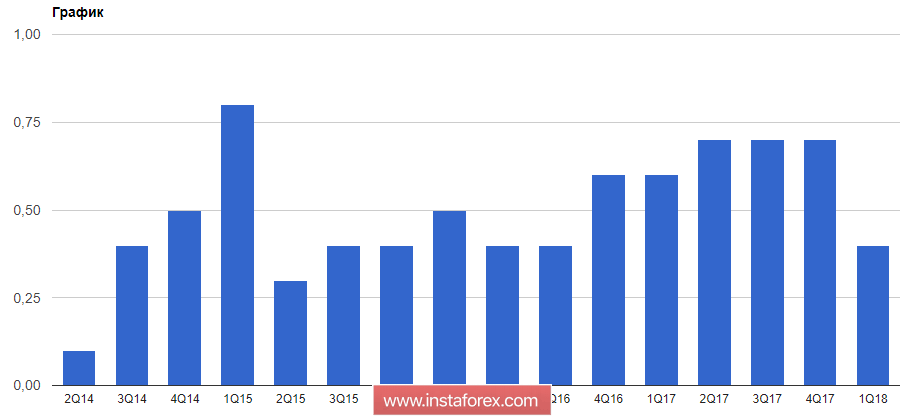The Eurozone's weak economic growth, along with the slowdown in its flagship German economy, has affected the sentiment of traders who are rushing to lock in long positions in the European currency after the recent corrective growth.
According to the Federal Bureau of statistics, German economic growth slowed in the 1st quarter of 2018. As noted in the report, one of the reasons for the slowdown was a series of strikes that swept through Germany. Thus, GDP growth in annual terms was at 1.2% against 2.5% in the 4th quarter of 2017. Economists also predicted a slowdown in the German economy in the 1st quarter.
According to the Bureau of statistics, France's GDP growth for 2017 was revised to 2.2%, from 2%, as previously reported. Good GDP growth was recorded in the 1st quarter in Spain, which partly offset the fall in the overall indicator for the Eurozone.
According to the report of the statistical Agency Eurostat, the growth rate of economic activity slowed. Thus, the Eurozone economy in the 1st quarter of 2018 grew by only 0.4% compared to the previous quarter after an increase of 0.7% in the 4th quarter of last year. These data fully coincided with the preliminary forecast, as well as with the expectations of economists.

As for the technical picture of the EUR/USD pair, the bearish scenario continues to work out. The breakthrough of support at 1.1890, from which the euro continued to grow on Friday, could lead to a number of new short positions and a further decline of the euro towards the low of 1.1850 and 1.1820
The British pound did not receive much support after the publication of the report on the labor market, which indicated that from January to March this year, unemployment in the UK remained at its minimum level.
According to the National Bureau of Statistics, unemployment remained at 4.2 percent, while the number of unemployed in the UK decreased by 46,000 during the reporting period.
Despite this, the pound continues to decline, moving towards the lower border of the side channel, which was formed after the decision of the Bank of England on interest rates last week in the level of 1.3460.
Data from the National Bureau of Statistics also came out in the first half of the day, which indicated that industrial production in China in April of this year increased by 7.0% compared to the same period last year after an increase of 6.0% in March. Economists had expected production to grow by 6.4 percent.
Retail sales in China rose only 9.4% in April, following a 10.1% increase in March compared to the same period last year. The unemployment rate fell to 4.9% in April.
 English
English 
 Русский
Русский Bahasa Indonesia
Bahasa Indonesia Bahasa Malay
Bahasa Malay ไทย
ไทย Español
Español Deutsch
Deutsch Български
Български Français
Français Tiếng Việt
Tiếng Việt 中文
中文 বাংলা
বাংলা हिन्दी
हिन्दी Čeština
Čeština Українська
Українська Română
Română

